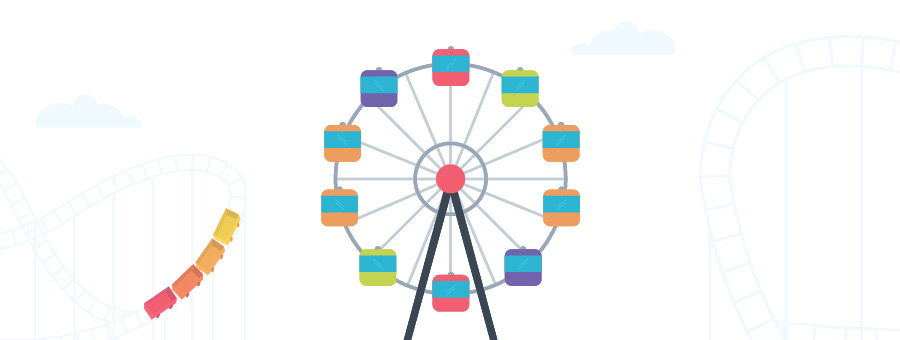NoSQL Database for Amusement Park Applications


Mobaro chooses RavenDB for their amusement park management application
Ever go to an amusement park and endure the long ride?
That’s where you stand in front of a hundred people and move one leg a step forward every 3 minutes until you get to the front of the line.
It costs around $50 for the entrance fee. That can be over $200 for a family. Then there are meals, games, toys, and the Imax movie.
Amusement Parks rake in over $22 billion annually in the United States alone. For all that money, you think they would do something to make sure we spend more time enjoying the rides rather than waiting for them?
Mobaro has come up with a solution.
NoSQL Database & Cutting Edge Technology for Old School Equipment
Old tech meets new tech as Mobaro creates applications to revolutionize the fun park experience.
Where some rides have the latest technology installed, most don’t. They cost millions of dollars and have a life of 30 years or more. It costs too much to retrofit them.
Mobaro works with the legacy infrastructure to bring roller coasters like Superman: Escape from Krypton, which started running in 1997, up to speed.
Mobaro uses time-series data to make it happen for everyone.
A ride operator, at the push of a button, creates ride metrics upon dispatching the ride. In an instant, metrics like the time between rides, the number of riders on each ride, estimated queue time, the employee operating the ride, the time of day, and more are sent to a server for management to analyze.
This tells managers who are the most productive employees in terms of moving people along the line. They know when to assign these workers to the busiest rides throughout the day. When to give them breaks, and when to assign less productive workers rides that have less traffic.
This is how fun parks utilize the Mobaro app to make lines go faster, giving more satisfaction and fun for their guests.
This also maximizes the return on the investment for the purchase of each ride, some of them costing in the tens of millions of dollars. It enables theme parks to buy cooler rides, knowing they will make positive returns.
Mobaro’s applications are used in over 150 theme parks worldwide. Clients include Drayton Manor Theme Park and Paultons Park in England, Seaworld in all their US locations, Atlantis in Dubai, Hershey Park in Pennsylvania, and even indoor amusement parks.
Along with the operator app that manages lines, Mobaro has an admin app that lets parks digitize their entire safety and maintenance operations. This includes real-time monitoring of daily, weekly, and periodical inspections of rides, constant upkeep of cleanliness for food courts, and efficiency of how each employee handles the tasks assigned to them.
How they use RavenDB NoSQL Database
RavenDB NoSQL Database is used in the application database to drive all parts of the application. It is the primary database alongside SQL Server, which RavenDB collects data and replicates to via ETL.
ETL enables people working in the parks to update checklists of what needs to be done on their mobile devices and sends them to a central application for management to create reports for. Then, in real-time, anything that needs to be done is reported to keep parks running 100% at all times.
To guarantee the safety of each guest, this is a standard that must be maintained at all times and Mobaro’s app makes it happen.
They tried SQL databases for a while, but the too many tables solution didn’t work. The schema requirement became an ongoing obstacle to agility. Finally, they tried MongoDB, but it was inadequate for their .NET framework.
Different amusement parks had their specific task lists, local regulations, and on-location quality standards to follow. Mobaro had to be flexible enough for each client to tailor their checklists and analytics to specific needs.
RavenDB’s schemaless structure lets each client remold their templates to their specific benchmarks. Users can do this effortlessly, saving time and overhead. Mobaro could also roll out new builds faster, meeting individual client requests for such features.
Query times shot up using automatic indexes. Data is already computed for aggregates, and indexes are ready upon requests for information. For real-time demands, this was critical.
Why should you be stuck rearranging tables when you can bring your data into the next generation of information? Take a live demo of RavenDB with a developer who will answer all your questions.
Woah, already finished? 🤯
If you found the article interesting, don’t miss a chance to try our database solution – totally for free!




